第109章 CENTRAL CHILE:--STRUCTURE OF THE CORDILLERA(4)
In several places in the lower part of the series, but not everywhere, thick masses of a highly feldspathic, often porphyritic, slaty rock occur interstratified with the porphyritic conglomerate; I believe in one or two cases blackish limestone has been found in a similar position.The feldspathic rock is of a pale grey or greenish colour; it is easily fusible; where porphyritic, the crystals of feldspar are generally small and vitreous: it is distinctly laminated, and sometimes includes parallel layers of epidote (This mineral is extremely common in all the formations of Chile; in the gneiss near Valparaiso and in the granitic veins crossing it, in the injected greenstone crowning the C.of Quillota, in some granitic porphyries, in the porphyritic conglomerate, and in the feldspathic clay-slates.); the lamination appears to be distinct from stratification.Occasionally this rock is somewhat curious; and at one spot, namely, at the C.of Quillota, it had a brecciated structure.Near the mines of Jajuel, in a thick stratum of this feldspathic, porphyritic slate, there was a layer of hard, blackish, siliceous, infusible, compact clay-slate, such as I saw nowhere else; at the same place I was able to follow for a considerable distance the junction between the slate and the conformably underlying porphyritic conglomerate, and they certainly passed gradually into each other.Wherever these slaty feldspathic rocks abound, greenstone seems common; at the C.of Quillota a bed of well-crystallised greenstone lay conformably in the midst of the feldspathic slate, with the upper and lower junctions passing insensibly into it.From this point, and from the frequently porphyritic condition of the slate, I should perhaps have considered this rock as an erupted one (like certain laminated feldspathic lavas in the trachytic series), had I not seen in Tierra del Fuego how readily true clay-slate becomes feldspathic and porphyritic, and had I not seen at Jajuel the included layer of black, siliceous clay-slate, which no one could have thought of igneous origin.The gentle passage of the feldspathic slate, at Jajuel, into the porphyritic conglomerate, which is certainly of aqueous origin, should also be taken in account.
The alternating strata of porphyries and porphyritic conglomerate, and with the occasionally included beds of feldspathic slate, together make a grand formation; in several places within the Cordillera, I estimated its thickness at from six to seven thousand feet.It extends for many hundred miles, forming the western flank of the Chilean Cordillera; and even at Iquique in Peru, 850 miles north of the southernmost point examined by me in Chile, the coast-escarpment which rises to a height of between two and three thousand feet is thus composed.In several parts of Northern Chile this formation extends much further towards the Pacific, over the granitic and metamorphic lower rocks, than it does in Central Chile; but the main Cordillera may be considered as its central line, and its breadth in an east and west direction is never great.At first the origin of this thick, massive, long but narrow formation, appeared to me very anomalous: whence were derived, and how were dispersed the innumerable fragments, often of large size, sometimes angular and sometimes rounded, and almost invariably composed of porphyritic rocks? Seeing that the interstratified porphyries are never vesicular and often not even amygdaloidal, we must conclude that the pile was formed in deep water; how then came so many fragments to be well rounded and so many to remain angular, sometimes the two kinds being equally mingled, sometimes one and sometimes the other preponderating? That the claystone, greenstone, and other porphyries and amygdaloids, which lie CONFORMABLY between the beds of conglomerate, are ancient submarine lavas, I think there can be no doubt; and I believe we must look to the craters whence these streams were erupted, as the source of the breccia-conglomerate; after the great explosion, we may fairly imagine that the water in the heated and scarcely quiescent crater would remain for a considerable time sufficiently agitated to triturate and round the loose fragments, few or many in number, would be shot forth at the next eruption, associated with few or many angular fragments, according to the strength of the explosion.(This certainly seems to have taken place in some recent volcanic archipelagos, as at the Galapagos, where numerous craters are exclusively formed of tuff and fragments of lava.) The porphyritic conglomerate being purple or reddish, even when alternating with dusty-coloured or bright green porphyries and amygdaloids, is probably an analogous circumstance to the scoriae of the blackish basalts being often bright red.The ancient submarine orifices whence the porphyries and their fragments were ejected having been arranged in a band, like most still active volcanoes, accounts for the thickness, the narrowness, and linear extension of this formation.
This whole great pile of rock has suffered much metamorphic action, as is very obvious in the gradual formation and appearance of the crystals of albitic feldspar and of epidote--in the bending together of the fragments--in the appearance of a laminated structure in the feldspathic slate--and, lastly, in the disappearance of the planes of stratification, which could sometimes be seen on the same mountain quite distinct in the upper part, less and less plain on the flanks, and quite obliterated at the base.